Dozens of images from Sudan’s El-Fasher have surfaced on Sudanese social media since Monday, October 27. One video shows pick-ups crammed with armed men speeding along the road ahead of fleeing civilians. Another shows fighters parading through the streets. And yet another shows trenches dug in the sand, piled with lifeless bodies.
These chilling videos were filmed and posted by the Rapid Support Forces (RSF), who took the city from the Sudanese army after more than a year and a half of siege. For the RSF, it is a major step towards wresting control of Sudan from the army.
The RSF emerged in the aftermath of the Janjaweed paramilitary group, known for having carried out ethnically based massacres in Darfur between 2003 and 2005. And since their capture of El-Fasher, the RSF have been filming themselves in triumph in the streets.
To display this content from X (Twitter), you must enable advertisement tracking and audience measurement.
Abu Lulu, a militia man who films the atrocities he commits
The RSF have also been filming their atrocities, as shown by images shared by a pro-RSF Telegram channel called marek55500. Three different videos posted on this channel show fighters parading in front of a mass grave filled with dozens of bodies.
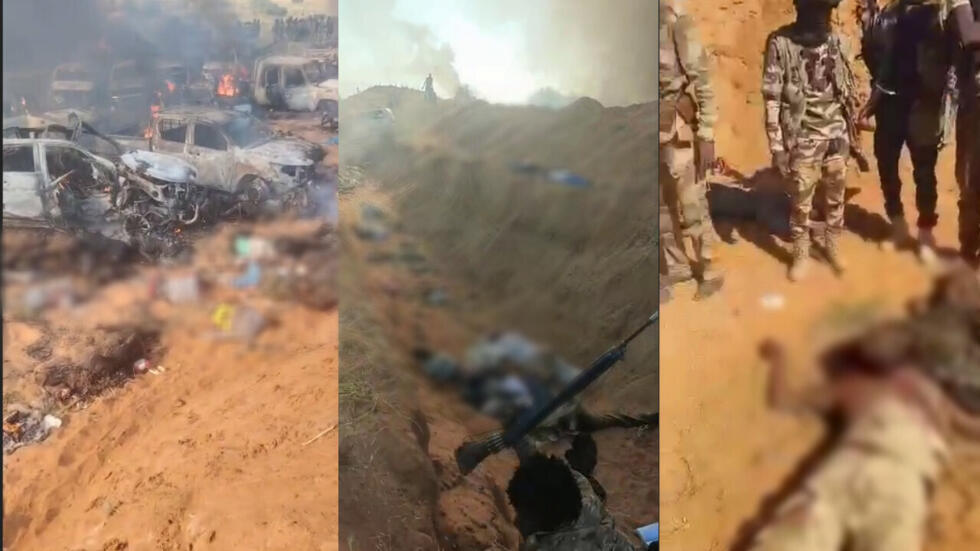
Our team counted 33 bodies visible in just one of the three videos. It looks like there are around 50 bodies shown across the three videos. Out of these bodies, our team identified at least one woman as well as three men wearing camouflage.
While it is impossible to determine the precise location of this mass grave in El-Fasher, some members of the RSF are identifiable. One of them is a man known as Abu Lulu, also called Brigadier-General Al-Fatih Abdallah Idris. This man stands in front of a mass grave smiling widely, weapon in hand.
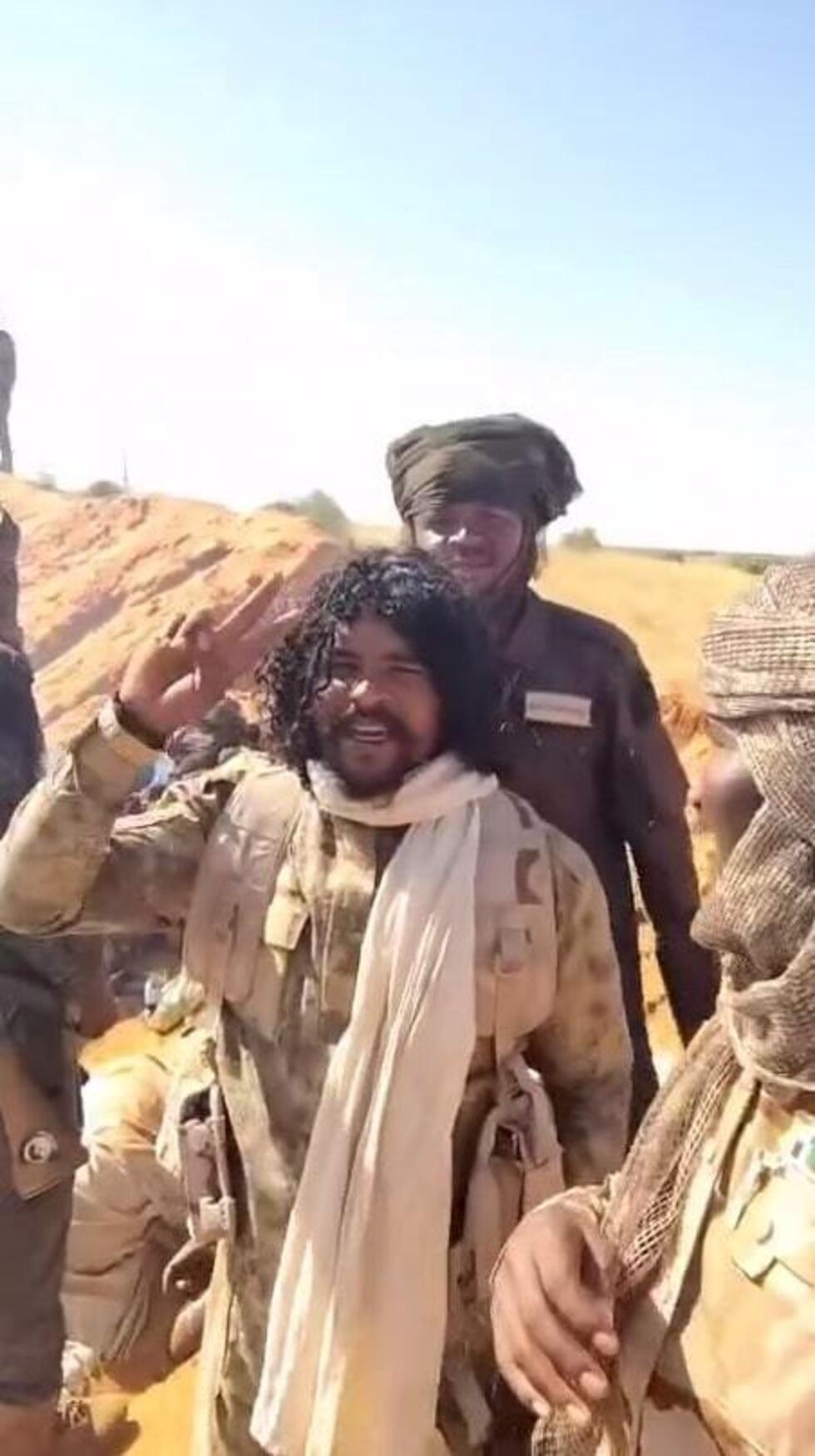
Another video filmed in the same location shows Abu Lulu executing a wounded man who is lying on the ground.
A few seconds before he is killed, the prisoner begs for mercy from Abu Lulu: "Mercy! Mercy!" The officers nearby try to convince Abu Lulu to spare him.
Abu Lulu refuses. Instead, he turns to the prisoner and says, “Even if General al-Burhan [Editor’s note: General Abdel Fattah al-Burhan, the leader of the Sudanese army fighting against the RSF] came here, I wouldn’t let you go. You haven’t given me useful information, you are no one, you don’t exist!”
Abu Lulu then fires five times at the man, killing him.
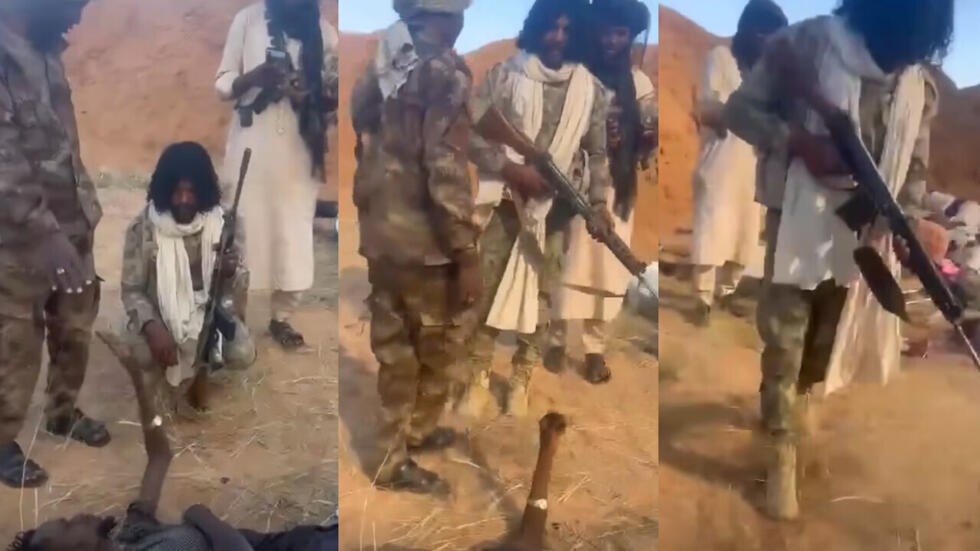
This isn’t the first time that Abu Lulu has performed his atrocities in front of the camera. On August 18, a video filmed in El-Fasher emerged online showing Abu Lulu executing another man in cold blood.
Before killing that man, Abu Lulu asked him about his ethnicity. When the man replies that he is Maba, one of the non-Arabic ethnic groups from Darfur regularly targeted by the RSF, Abu Lulu fires his pistol seven times at the man.
A few hours after the recent videos of Abu Lulu were posted online, the RSF tried to distance itself from him, claiming that he wasn’t part of their group. However, in images posted on his TikTok account, you can see Abu Lulu wearing a badge emblazoned with the RSF logo.

On Thursday, the RSF finally announced on their Telegram channel that Abu Lulu had been arrested: "Abu Lulu and a number of those involved in human rights violations in El-Fasher arrested by RSF." The post also features a video showing Abu Lulu in handcuffs and behind bars.
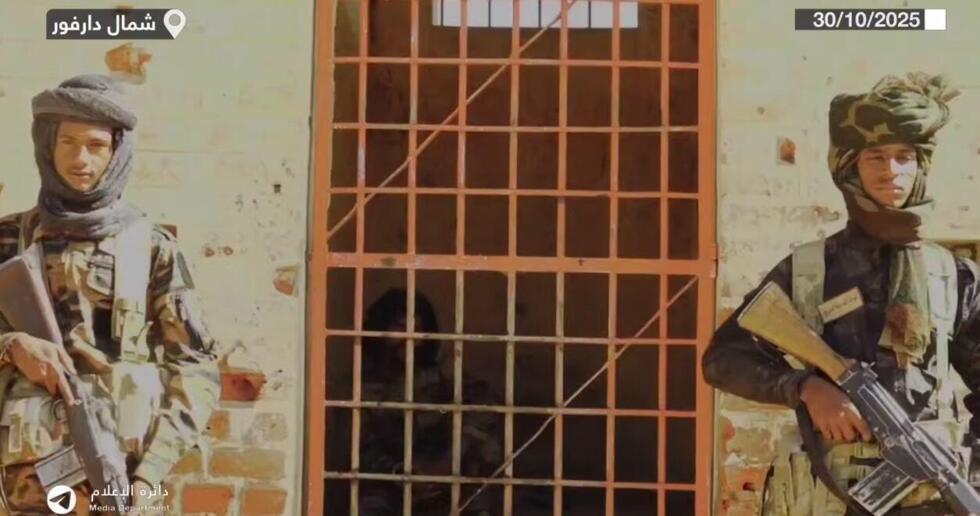
Massacres at the children’s hospital, the school of medicine and at the maternity ward
Massacres were also committed in several key civilian infrastructures in El-Fasher, although details are still emerging.
One video shows bodies piled in the hallways of the El-Fasher School of Medicine. A fighter walks down the stairs and enters a room filled with bodies. An unarmed man wearing white is sitting on the floor amidst the bodies, his back to the fighter.
The man in white turns to glance at the fighter furtively before turning quickly away. The fighter picks up his assault rifle and shoots the man in the back, killing him.
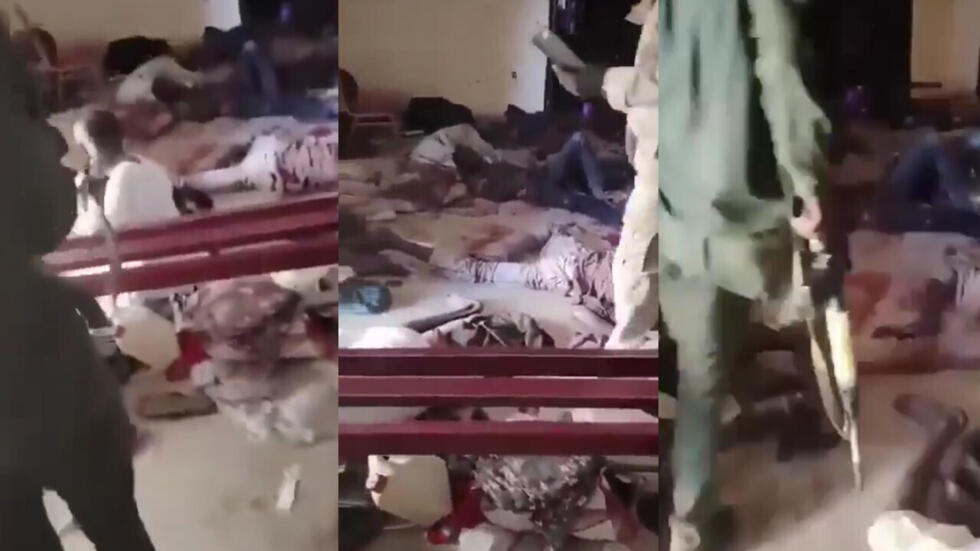
In this video, you can see at least 11 bodies.
Our team consulted satellite images from October 27 that show several pick-up trucks parked outside the School of Medicine.
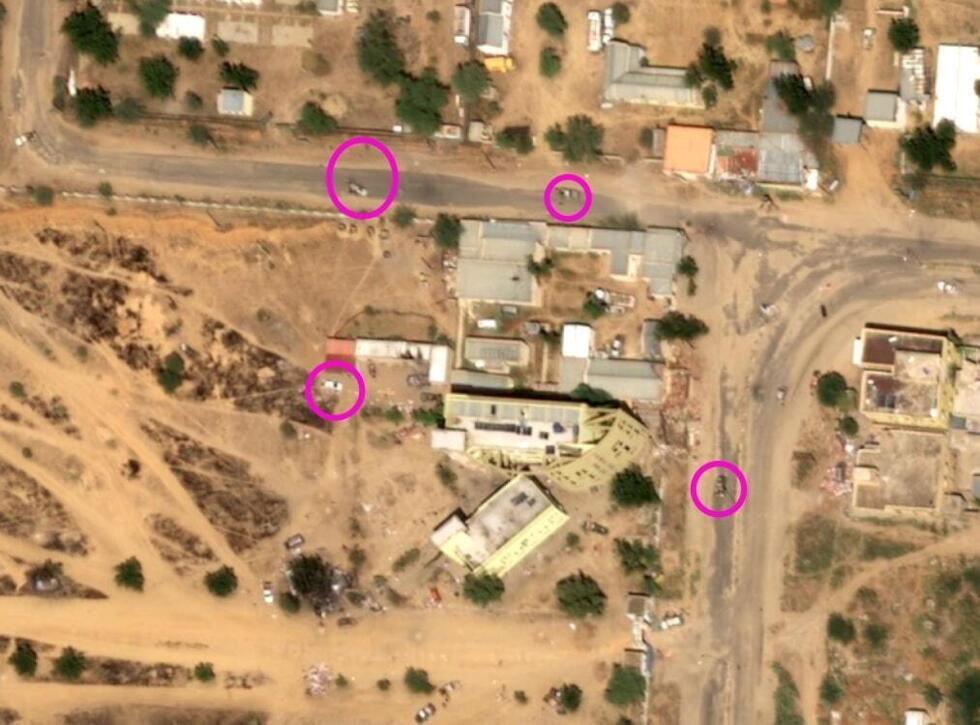
The RSF also targeted the children’s hospital. With communications cut and the streets occupied by the RSF, no images have emerged of the massacres. However, the Yale School of Public Health Humanitarian Research Lab gathered satellite images from October 27 that show black shapes that seem to be a pile of bodies stacked in front of the building’s compound.
The next day, the bodies appeared to have been moved to the side of the building.
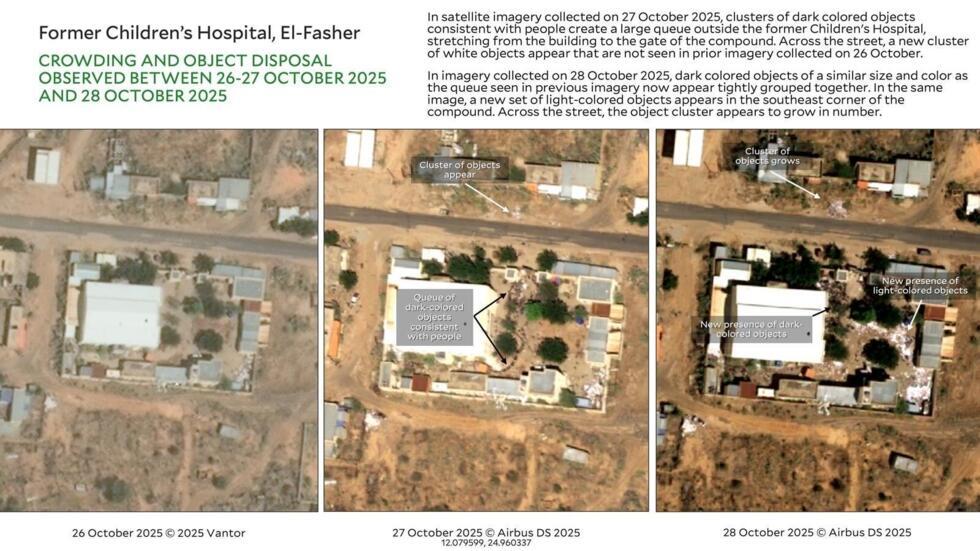
Tedros Adhanom Ghebreyesus, the director general of the World Health Organisation, denounced the killing of "460 patients and companions” in a massacre at the El-Fasher maternity hospital.
Satellite images show evidence of mass killings
Yale also published other satellite images from Monday, October 27, that show clusters with red discolouration around them, consistent with mass killings, in the Daraja Oula neighbourhood. Researchers say that the RSF went house by house, massacring people.
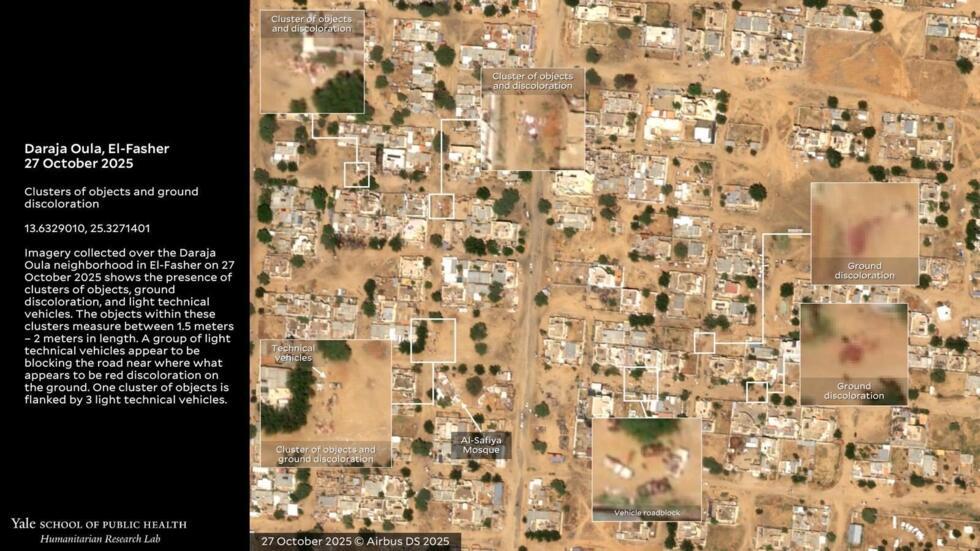
Nathaniel Raymond, a member of Yale’s Humanitarian Research Lab, said that they have concluded that the red discolouration visible in the satellite images is blood:
"This red discolouration has appeared in places where it wasn’t in the days before. Moreover, this discolouration has appeared near vehicles capable of carrying heavy machine guns. The red discolouration appears systematically next to shapes that are similarly proportioned to human bodies.
We saw this red discolouration in the neighbourhood of Daraja Oula [Editor’s note: a neighbourhood located in the western part of the city]. Many civilians hid in this area when the city was under siege. For the time being, we haven’t been able to look at all of the neighbourhoods in the city. But these satellite images allow us to confirm that there were large-scale massacres.
Satellite images captured the day before the Rapid Support Forces took full control of the city show plumes of smoke. On October 26, it is therefore possible to see several areas that were burned, including residences in the Daraja Oula neighbourhood, where signs of mass killings were identified the following day."

Other satellite images, dated Monday, October 27, and Wednesday, October 29, show the remnants of a convoy with burnt-out vehicles. It is impossible to independently determine whether these destroyed vehicles belonged to Sudanese army soldiers fleeing the RSF or to civilians.
Moreover, according to experts interviewed by the Observers team, it is difficult to date with precision the start of the Sudanese army's definitive withdrawal phase.
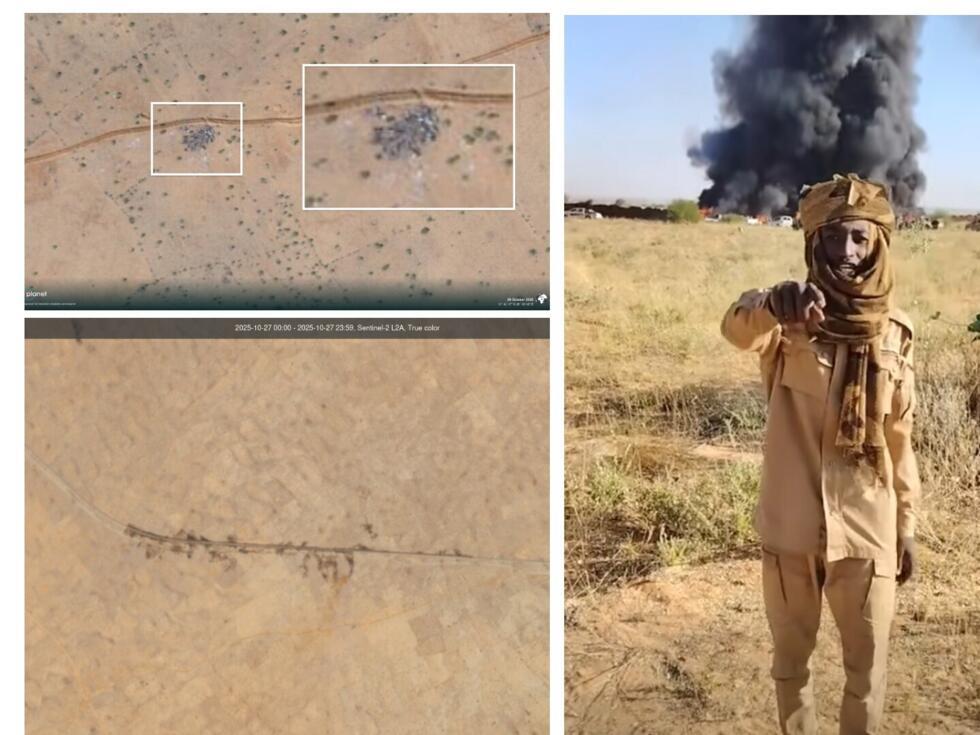
Fighters pursue fleeing civilians
Many images published on social media also show civilians fleeing amid RSF fighters. On their Telegram channel, the RSF itself shared drone footage showing dozens of civilians attempting to escape the El-Fasher area.
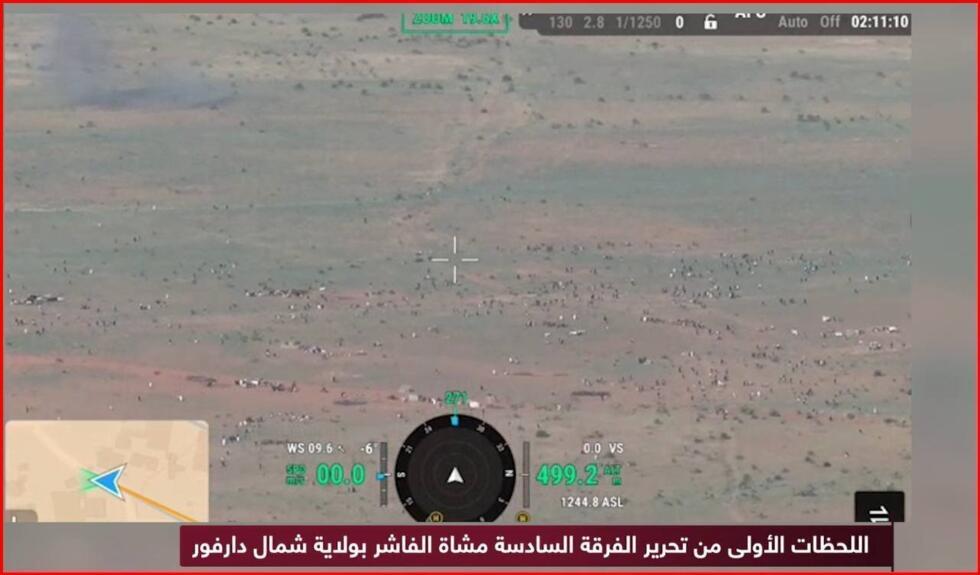
Another video shows RSF pickup trucks pursuing civilians attempting to flee. One of the militiamen aboard a pickup shouts, "Look at this large number [of fleeing civilians]. Catch the girls up ahead."
Another fighter cries out: "I swear to God, looting, looting!" However, it is impossible to verify the exact location of this video independently.
To display this content from X (Twitter), you must enable advertisement tracking and audience measurement.
‘Reports indicate the RSF demands large sums of money to allow people to flee the city’
Speaking to the Observers team, Sheldon Yett, a member of the UNICEF humanitarian mission in Sudan, said that the influx of refugees sparked by the city's fall will be very difficult to manage:
“There is a very large number of displaced people. It is a humanitarian disaster. Over the past three days, we have had to take care of thousands of civilians who left the city of El-Fasher to go to neighbouring villages or the Tawila refugee camp.
The displaced people who arrive here are completely exhausted and without resources. During the siege of the city, the Rapid Support Forces cut off all humanitarian aid by preventing our organisation and others from accessing the city. For months, there has been no food, medicine, or water in El-Fasher. The besieged civilians were eating animal food.
Moreover, reports indicate the RSF demands large sums of money to allow people to flee the city. Therefore, those who were able to escape the city are the ones who could afford to pay to leave. The most vulnerable populations are the ones who stayed behind.
We can sometimes make contact with the residents of the city, but it is complicated due to the communication blackout, as well as the RSF confiscating phones.”
Since the city's capture, the United Nations has issued multiple warnings. UN Secretary-General Antonio Guterres is calling for the establishment of a humanitarian corridor in El-Fasher.
This article has been translated from the original in French.








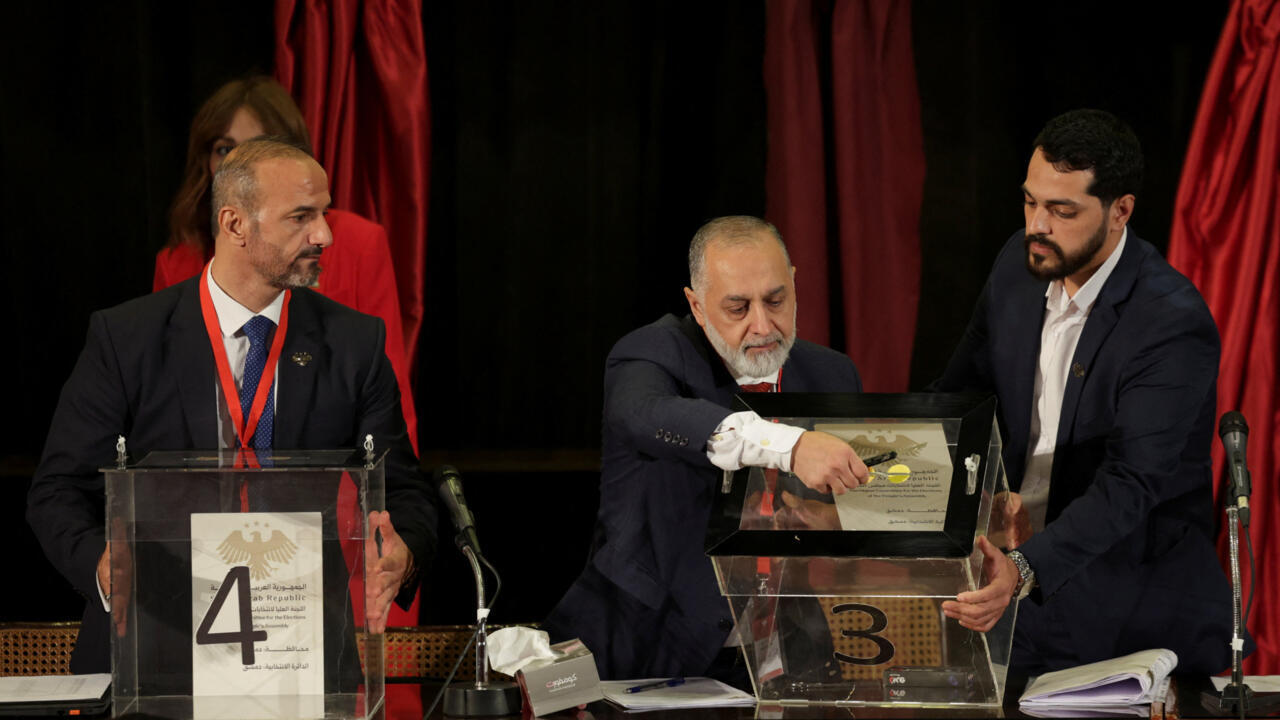


 English (US) ·
English (US) ·